Travel Plans for After Ukraine's Victory
“After Ukraine’s victory, we will go to Crimea for our vacation”, my colleagues from Kyiv told me many times. Being able to visit the once Russia-occupied region would be a very visible sign of victory for many Ukrainians. However, for those who are not that familiar with Ukraine, dozens of amazing travel destinations appear – besides the legendary Crimea. Ukraine is the largest country fully located in Europe and has astonishingly different landscapes and unique historical regions. It boasts forests, mountains, grasslands, rivers, seaside, and even deserts. Its cities and towns often have a history of over a thousand years, and one can find here a broad palette of sights from medieval castles to thriving million-inhabitant cities. Here is a top-five destination guide, including some not so famous names and destinations beyond well-known Kyiv, Lviv, Odesa, or Kharkiv. Some of these destinations are relatively safe to visit even amid the ongoing war.
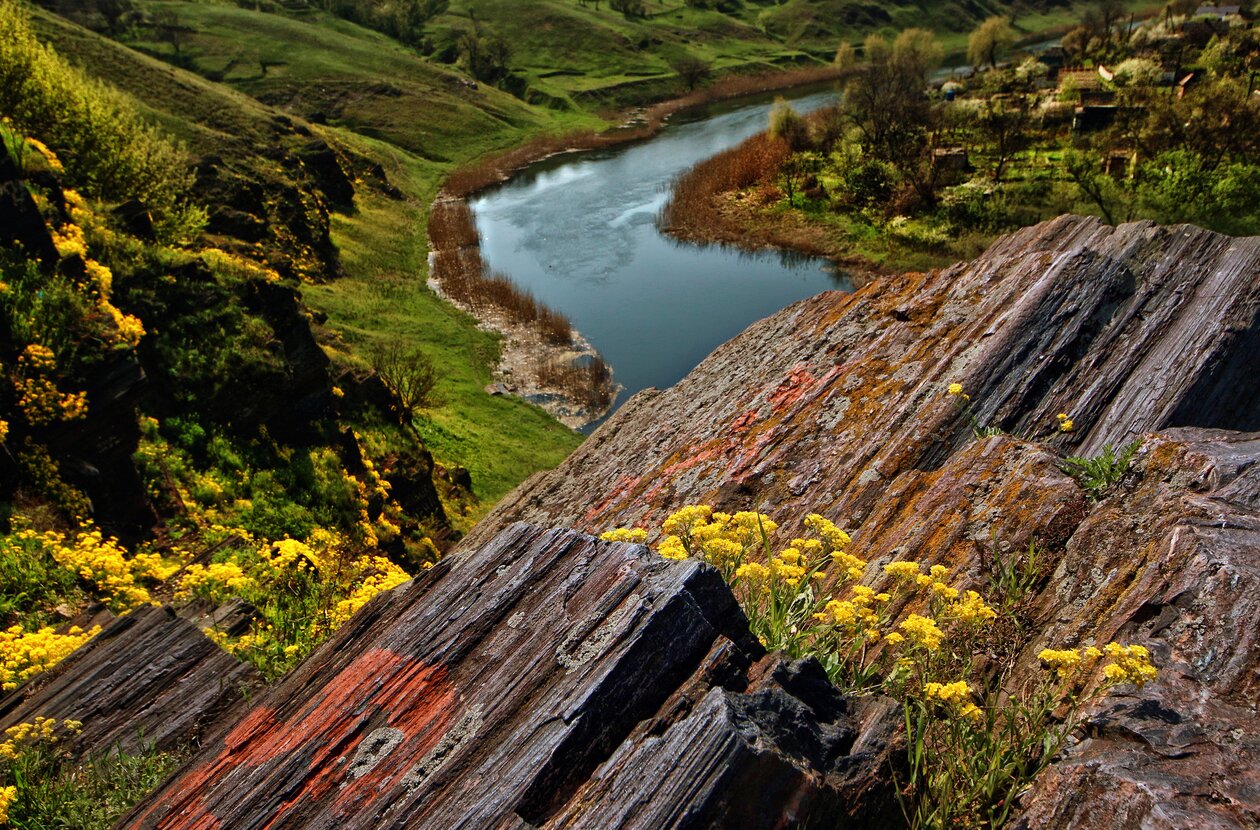
Kryvyi Rih, River Inhulets creates picturesque landscapes around industrial Kryvyi Rih city, literally “twisted horn”. Ryzhkov Sergey. CC-BY 4.0
1. CHERNIHIV is one of Ukraine’s oldest towns. Located just 140 kilometres north of Kyiv, and almost on Ukraine’s border with Russia and Belarus, it used to stay in the shadow of other prominent touristic directions. Totally underestimated! The city not only has its amazing old town with cathedrals and museums, but it was also perfectly governed for years and has parks, bicycle lanes, and cozy cafes. It is also home to tasty Chernihiv beer. The highlight of the city: a cave monastery with a fully underground-located church, way more authentic compared to the one in Kyiv, which was decades-long mismanaged by the Russian church. Chernihiv also has the oldest active cathedral in Ukraine, Transfiguration Cathedral, with its marble pillars imported in the 11th century from Greece by a local prince. A replica of Friday Church – a pre-Mongol masterpiece of laconic architecture – gives the impression of an 800-year-old style, and a mansion of Ivan Mazepa, one of the elected princes of Ukraine and a hero of Ukraine’s fight for independence, crowns the historical treasury of Chernihiv. With the untouched Desna river basin, Chernihiv also offers opportunities for environmental tourism, fishing, and camping.
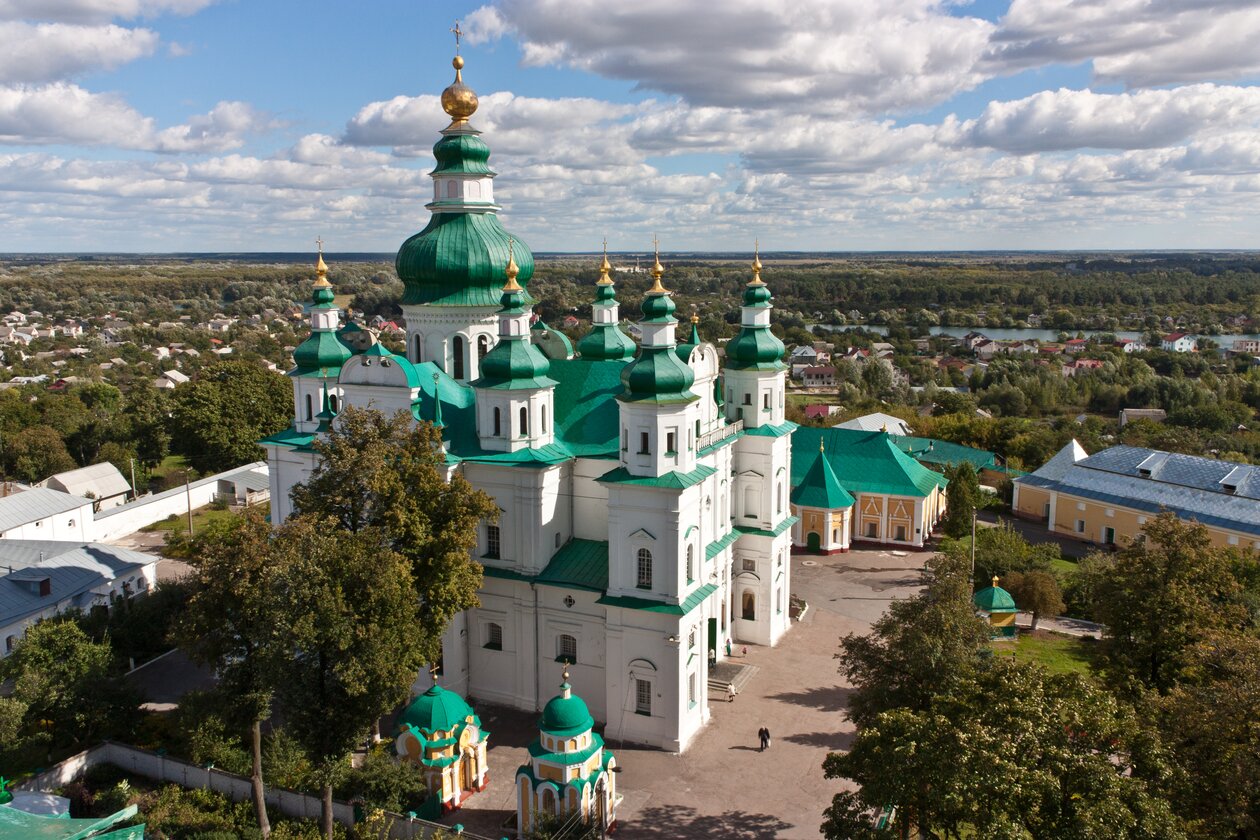
Chernihiv, Triniti Monastery. Valerii Sorokin, CC-BY 3.0
2. IVANO-FRANKIVSK is a beautiful city in the west of Ukraine, just 150 kilometres east-southwards from Lviv. It was founded in the 17th century by the Polish kings as Stanislawow and renamed in 1962 to Ivano-Frankivsk to honour Ivan Franko, a classical writer of Ukrainian literature. Despite its relatively young age, the city is a jewel of historical architecture. It offers not only beautiful baroque churches and old town buildings but also a unique modernist city hall, erected in 1935 by the Polish republic. Already during the first Russian invasion of 2014, Ivano-Frankivsk accepted hundreds of internally displaced persons, mostly from the IT sector. The attractiveness of Ivano-Frankivsk increased after the full-scale invasion of 2022, and the city has turned into a mecca of the Ukrainian IT industry. The very active urbanist movement of Ivano-Frankivsk has managed to start a programme of preserving and restoring historical windows and doors at the old town buildings, making Ivano-Frankivsk a must-see destination for everyone who values authentic architecture combined to a modern vibe.
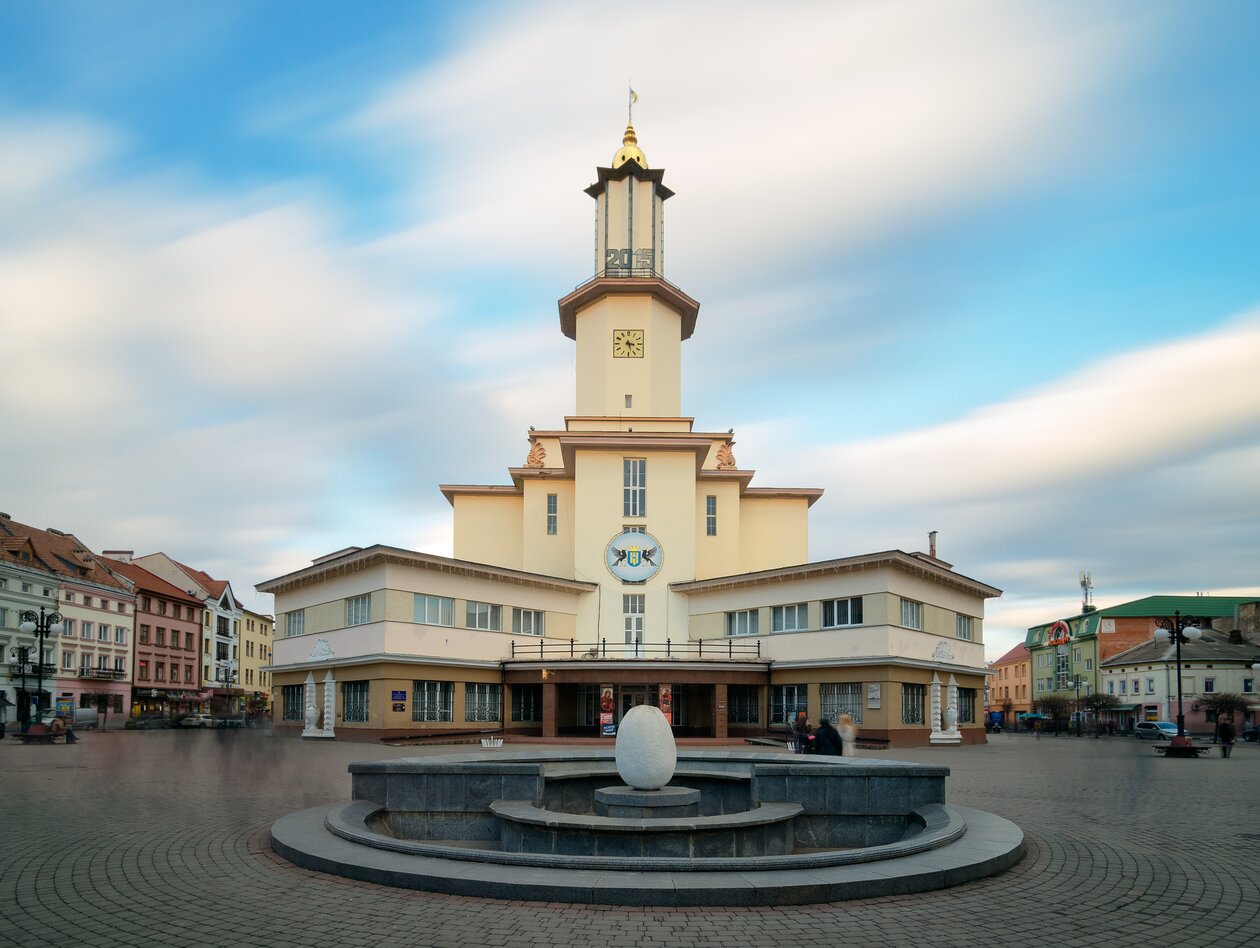
Ivano-Frankivsk, City Hall. Ryzhkov Sergey CC-BY 4.0
3. CHERNIVTSI. The capital of the Besarabia region bordering Moldova, Chernivtsi offers a unique alloy of Ukrainian modernity and Jewish, Romanian, and Austrian-Hungarian heritage. The street network looks more Italian than Central European, with dozens of little squares and starlike patterns of streets connecting them. Chernivtsi University is often called “the most beautiful university in Ukraine”, and this is not an exaggeration – a UNESCO World Heritage site is a former residence of an orthodox Metropolite of Bukovina, and this amazing complex offers guided tours through its beautiful buildings and a park for those who want to see its beauty from within. Chernivtsi is proud of its Jewish heritage and has authentic restaurants with Jewish cuisine. During the Austrian time, two of Chernivtsi mayors were Jewish, and the old Jewish cemetery, located on one of the city’s hills, thrones over the city with endless graves of Austrian-Hungarian lawyers, state servants, or musicians. One can freely visit the cemetery and honour not only the Jewish history of the 19th century and before but also the victims of the Holocaust. An interesting fact: Chernivtsi’s airport, an impressive building in modernist style, was built in 1928, offering flights to Bucharest and other cities. It is recommended to visit Chernivtsi on a combined trip to Lviv – Ivano-Frankivsk – Chernivtsi, with a distance not longer than 150 kilometres between each of the cities.
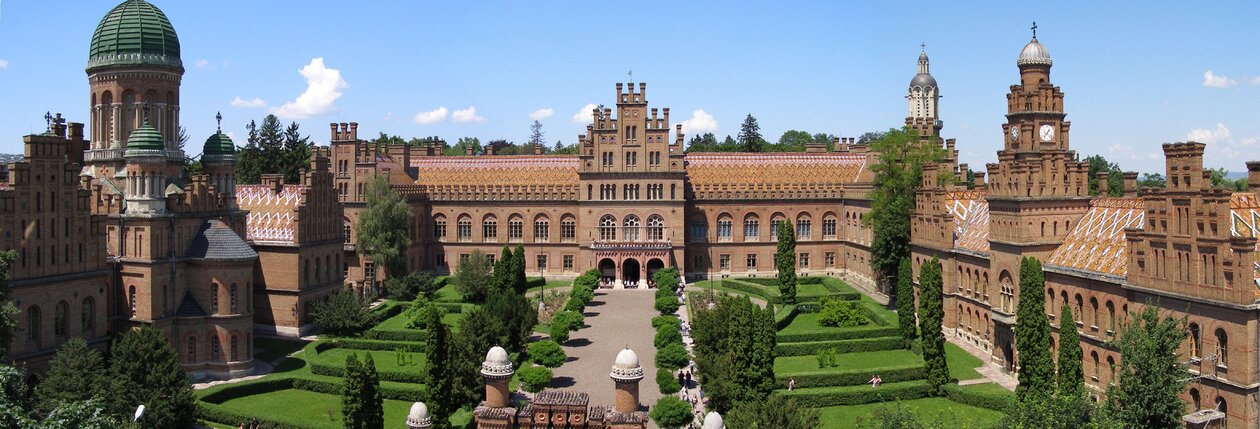
Chernivtsi. University. Nevidomy. CC-BY 4.0
4. Industrial Ukraine: KRYVYI RIH and Terricones of DONBAS. Kryvyi Rih is not a town that comes to mind when one thinks about travelling to Ukraine. Still, it is absolutely worth visiting if you are fond of industrial history. Kryvyi Rih (literally “crooked horn”) is Ukraine’s longest city. It is literally spread along a stripe of 80 kilometres, as the settlements that later formed the city were set along a narrow but long iron ore deposit. The city landscape is dominated by numerous industrial buildings of the iron ore mines – 50-metre-high towers enabling the lifting of iron ore from the depth. Dozens of abandoned mines create a reddish or ochre-coloured landscape, reminding of Arizona or Utah deserts. One can get guided tours through the mines and other sites of industrial heritage of the city. It is recommended to travel in summer when one can not only enjoy the colours of the soil but also swim in emerald-blue crystal clear waters of a former granite open-pit mine, flooded after the granite production was abandoned. Kryvyi Rih is also the hometown of President Volodymyr Zelensky. His media company Kvartal 95 (literally: “District 95”) is named after the district where Zelensky used to live, as the industrial tradition of Kryvyi Rih foresaw numbering of districts instead of naming them. And if one wants to feel the scale of industrial mines in Ukraine, Terricones (spoil tips) of Donbas are the logical destination. Terricones are being created out of soil brought to the surface after extracting ore or coal. With years, dozens and hundreds of massive hills are being created, often colourful, always gigantic. These artificial mountains dominate the Donbas landscape and are visible from a long distance. They are a sign of the human impact on nature and the industry-dominated history of Donbas.
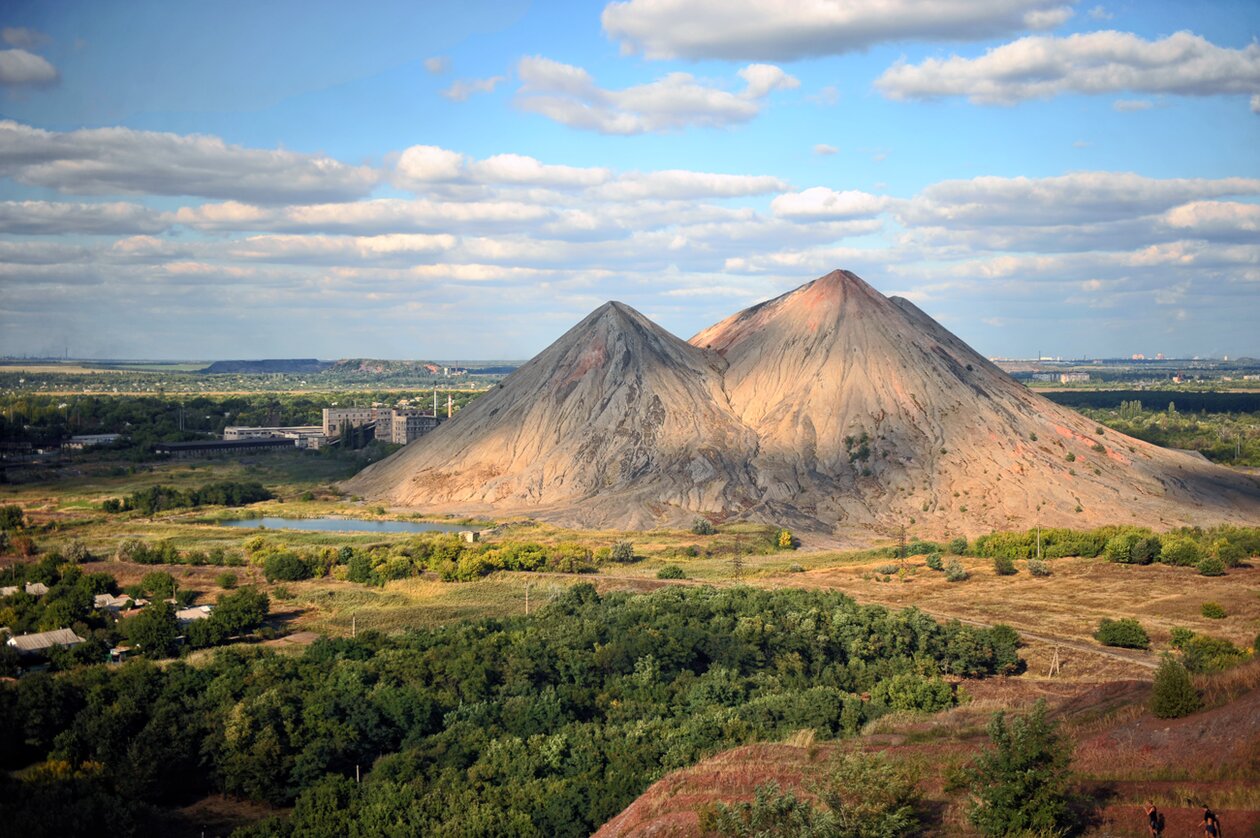
Spoil Pits. Valery Ded. CC-BY 3.0
5. The castles of the WEST OF UKRAINE and TRANSCARPATHIA Region. For those who want to touch hundreds of years of Ukrainian history scattered among endless hills and plains of the West of Ukraine, a tour through Ukrainian castles is a must-go. Khotyn, Zolochiv, Oleskyi, Pidhoretsky, Sviyazh, Khust, Palanek in Mukachevo, and other names sound like music to the ears of those who know medieval and early modern history of Central Europe. Each of these castles and palaces has a long stunning history with unexpected details. In Palanek – a castle built over a volcanic hill – Hungarians were hiding a crown of Hungary during the Napoleon wars. Khust castle – now an impressive ruin – was founded in 1090 and for centuries housed a garrison of soldiers guarding an important trade route for salt and silver trade until it was destroyed in the 18th century and turned into a romantic ruin, throning over the town. Oleskyi castle was a home for Jan Sobieski, a future Polish King who led allied armies against the Ottomans in the battle at Vienna, now an amazing museum and a highlight over the surrounding plain. Khotyn used to be a Moldovan, Polish, Cossacks, and even Ottoman fortress, with its walls over 40 metres in height! Of course, one cannot miss the marvelous town of Kamyanets-Podilskyi, a museum under the sky, a medieval town built on a natural isle, surrounded by a hundred-metre-deep canyon cut in the rocks by the waters of the Smotrych river. Each of these locations leaves everlasting memories and a feeling that one unfortunately only has one life, and it is not enough to visit every corner of beautiful Ukraine.
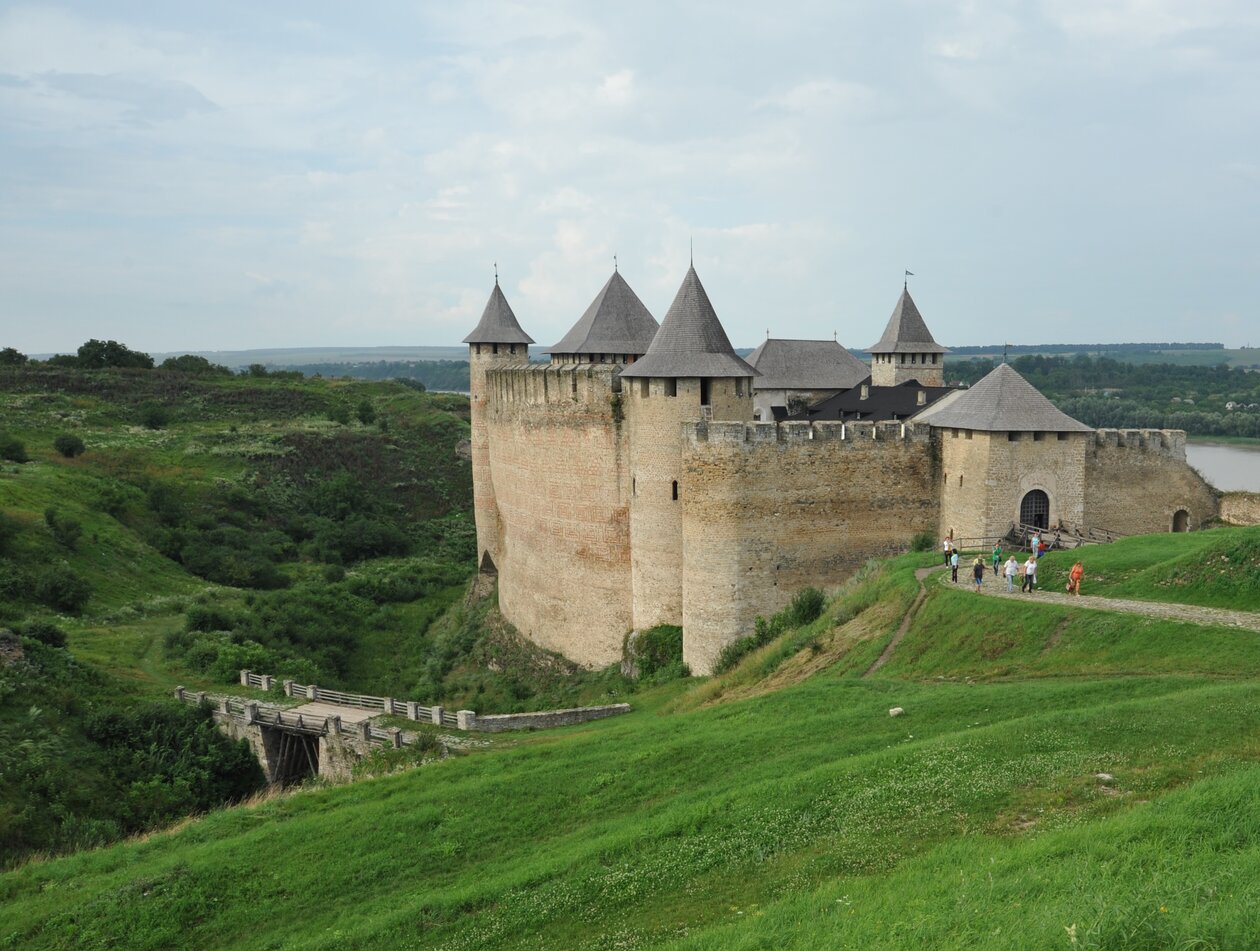
Khotyn. Khotyn Castle. Sergej Sumlenny, CC-BY 4.0
Did you like this article? Donate and support the European Resilience Initiative Center: